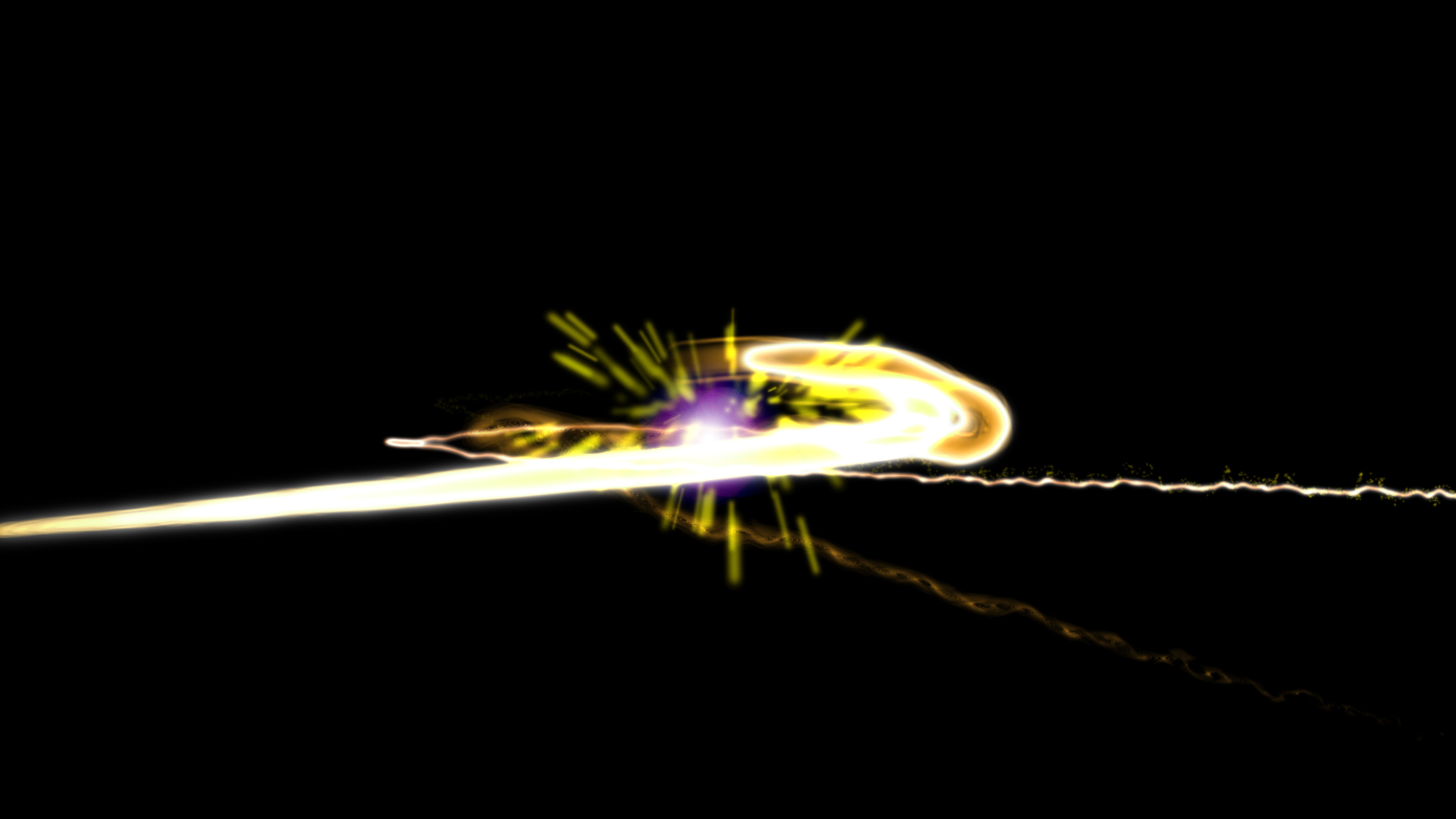There's nothing here, but we still know what it sounds like. What does that mean?
A sound sweeps from left to right. It’s invisible, of course: it’s just a sound—perhaps something moving through the air? A vehicle? A projectile? It surprises no one; we’re all used to this sound.
On television commercials or movie trailers it often echoes with a visual attachment to a streak of light, a comet of particles in a graphical sequence, or an aural swoosh that underscores speed and distance. It’s the half-second sound effect on top of the theme music when a CNN logo disappears into a commercial break. On radio it’s just a sound, woven into the texture of the larger experience of sound reaching our ears. It’s the imagined rush of audible information punctuating an announcer’s charge to come in and take advantage of a great deal on a new truck!
This is not the sound of a train passing us, red-shifted Doppler suggesting velocity and trajectory. It’s also not a rushing whoosh of a passing plane, nor a splash of water as it strikes a surface from some invisible height. It’s a sound that does not exist in nature. Nonetheless you all know it. It’s a familiar trope: you know it when you hear it. It’s so familiar as to be expected, practically—a piece of the world that would subconsciously sound “off” if it weren’t present when we thought it should play. It does not exist in nature. It’s artificial, and like most artificial things it’s an abstraction of aspects of a physical world that we understand intuitively.
In its ephemerality, we understand something important if we give ourselves over to this intangible thing. We understand that this unnatural sound is a cue to remind us about very real, tangible, physical phenomena. The sound signals stuff we experience in our minds as proxies for actual events in the real world. When we hear this thing we intellectually understand that what it’s really connecting us to is past experiences with other media, and if you’re paying attention to that metonymy, those other media themselves harken back to even more distant shadows and echoes. It’s as if the extension of our media expectations recalls some unfathomable ur-media, like what the Leakeys might have encountered if Lucy had been propped up in a Flintstones editing suite somewhere in the ancient Olduvai.
But today, swoosh after swoosh after swoosh, those tethers begin to grow thin. We begin to hear that sound as a deliverer of information rather than an indication of movement. We expect it to sync with shimmering light moving side to side in visual media, and we expect it to be an aural set-up to a cognitive payoff if we hear it in our headphones at the gym.
In a tiny way, this sound destabilizes the universe. Untethered to direct physical cause, one wonders if its cultural velocity is now something that exists inside its own conceptual bubble. If the answer to that question is “yes”, the next inevitable question becomes profound: if we’re building our cognitive, created worlds out of elements no longer tethered to the physical world, are we at risk of our creative abstractions losing their potency? After all, when we no longer intuitively understand the physical references evoked by our senses, our ability to understand the value of ideas degrades because suddenly everything…could mean anything. And if that’s true, what’s to stop us collectively from going the next step and determining that nothing means much of anything in the first place?

